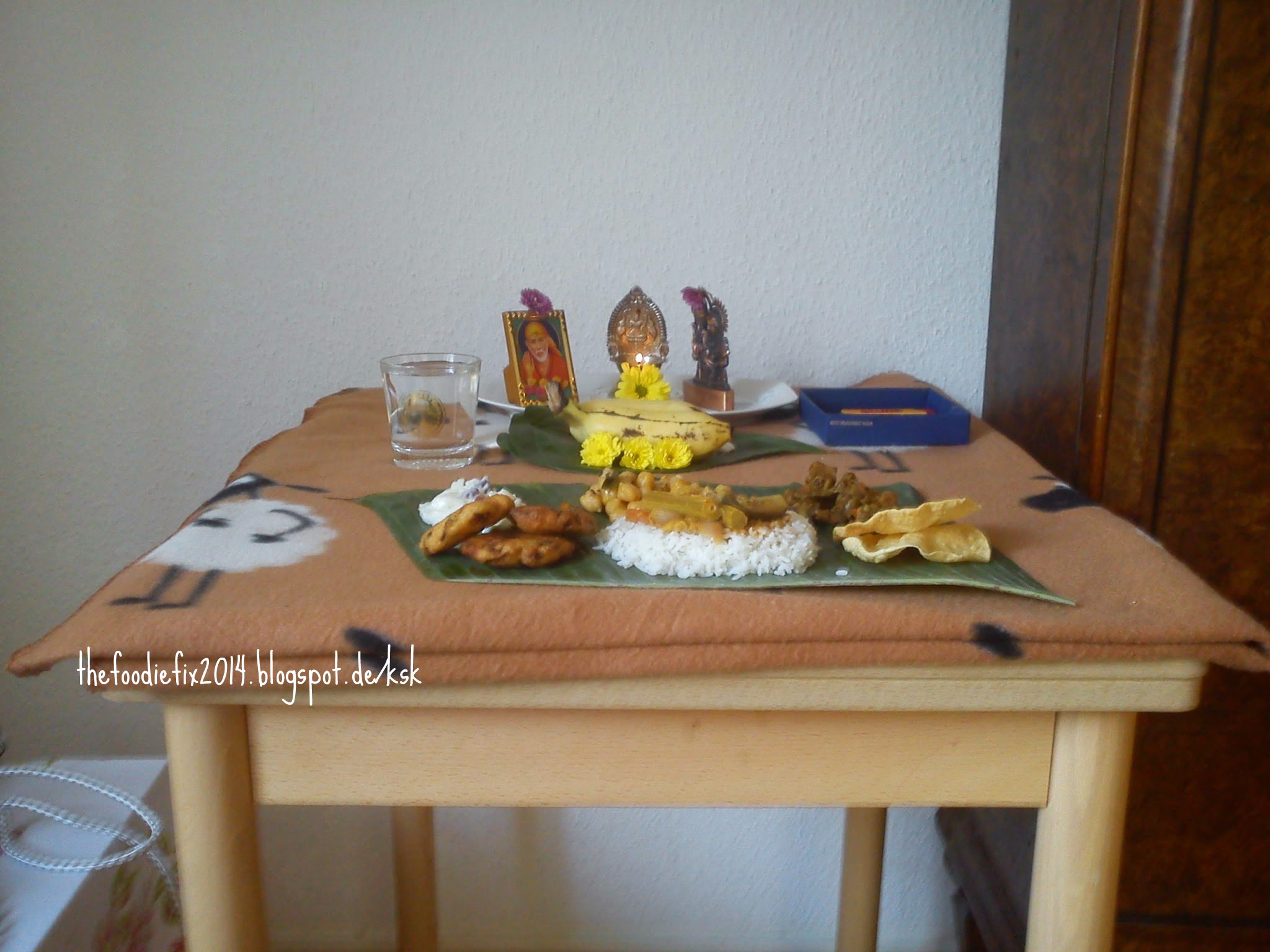I realized that I hadn’t posted any sweet/dessert for days on my blog, and
I was making something special for amavasaya. I looked in my
fridge and I had a lot of fruits in there.

So, I decided to make a fruit based sweet. Somehow, Indian desserts
are more milk based than fruit based. Other cultures go-to desserts seem
to be fruit based, like pies and cobblers. I wonder why..The only fruit
based dessert that I could think of, with what I had on hand was
Pineapple Kesari.
The word ‘Kesari’ is not a tamil word. Surprised?? (So, was I :)) It
is a Sanskrit word that means ‘saffron flower’. I assume the tamil word
is derived from the usage of the saffron strands in the preparation of
the sweet ‘kesari’, that imparts the saffrony color to the sweet. So
much so that, we refer to the food color as ‘kesari color’. I almost
feel guilty writing this recipe, coss I didn’t use any saffron in my
preparation of kesari. The next time I make this sweet, it will stay
true to its namesake. Thats a promise.
Ingredients:
1 1/2 cups chopped pineapple
1 1/2 cups of roasted white sooji(rava)
3 cups sugar
4 1/2 cups water
3 tbsp ghee (clarified butter)
1 tbsp chopped cashews
1 tbsp raisins
pinch of salt
1/4 tsp cardamom powder
yellow food color – 4 drops
Method:
Add the chopped pineapple to a blender, and pulse so that you have a
slightly grainy pulp. Remove. Measure 4 1/2 cups of water and use it to
rinse the blender, making sure you get every bit of pineapply flavor out
of it.
In a nonstick pan, over medium heat, melt 1 tbsp ghee, add the
cashews and fry until golden brown. Add the raisins and fry until they
plump up. In the same pan, add the rava, and fry till golden brown and a
nice aroma hits you, remove and cool. I had double roasted rava on
hand, and so I skipped this step. Add the water, to the same pan and
bring to a boil. Add the pinch of salt to the water. When the water
boils, remove the pan from the heat and add the rava. Switch to a whisk
now, if you have one and slowly incorporate the rava into the water. It
is not traditional to remove the pan from the heat, but I find that if
you leave it on, there is a lot of spluttering, and nobody wants to make
something sweet while crying from pain.

Keep whisking, off the heat, until the rava absorbs a little bit of
water and is becoming this homogenous mass. Make sure there are no
lumps. Now return the pan to the stovetop, still whisking. This is not a
dish, where you can leave it on the stove and walk away, it needs a lot
of babying, just to make sure there are no lumps. When the rava is
completely cooked, add the sugar, and mix well. The sugar will make the
mixture liquidy, don’t be alarmed. Let it cook and incorporate into the
rava. As it thickens, add the pinapple pulp to the kesari. Add the
cardamom powder, the fried cashews and raisins and the yellow food
color. After mixing in all the ingredients, slowly add the 2 tbsp ghee,
and mix until the kesari forms together and starts leaving the sides of
the pan. Switch off stove, enjoy!
This recipe uses way less ghee than it is supposed to. Naturally, it
won’t taste as rich as the fall of the spoon, kovil prasadham types.
Feel free to add more sugar/ghee to add richness.













